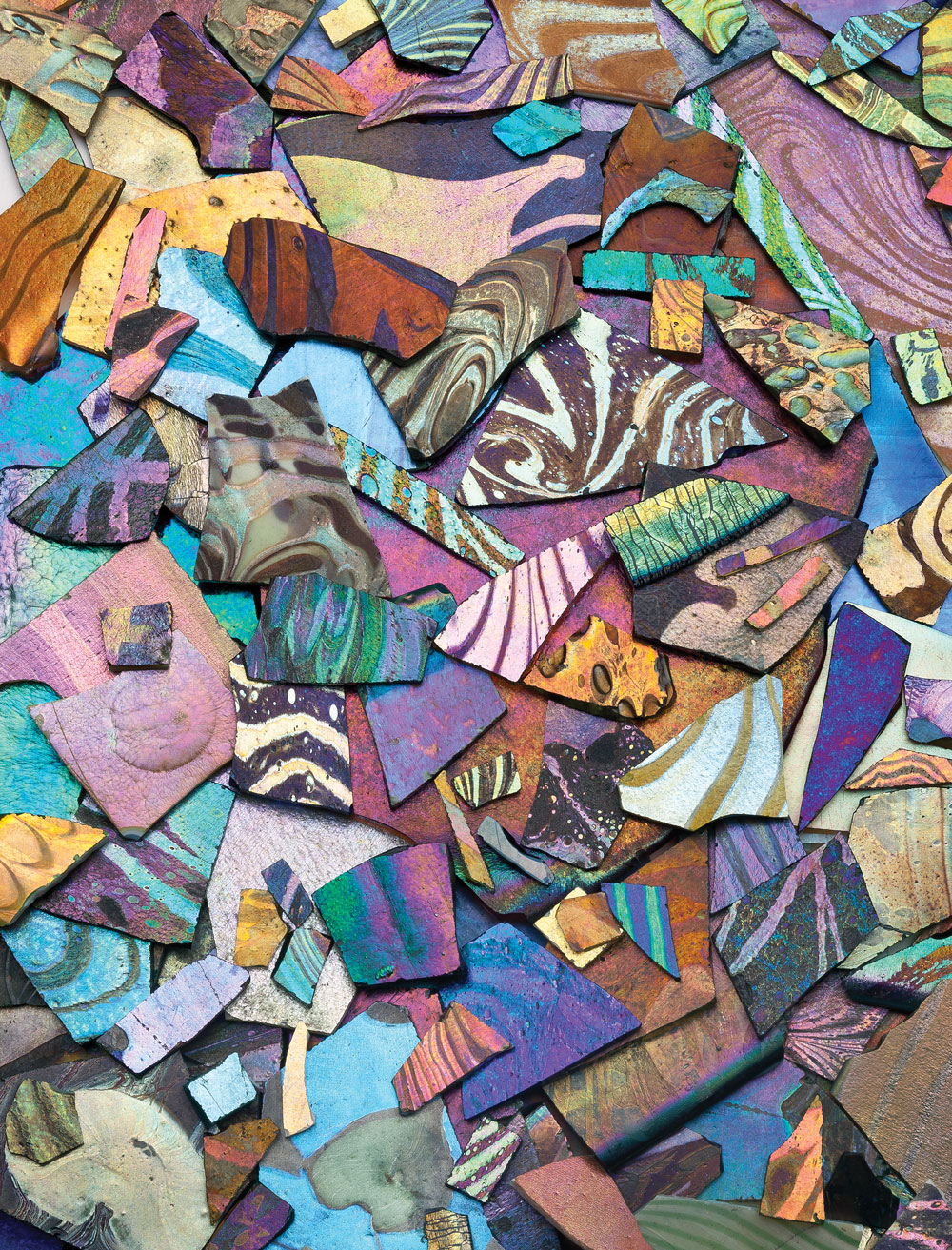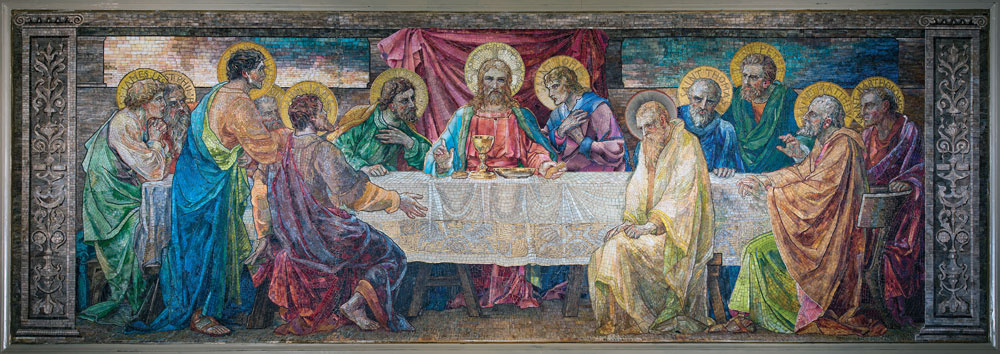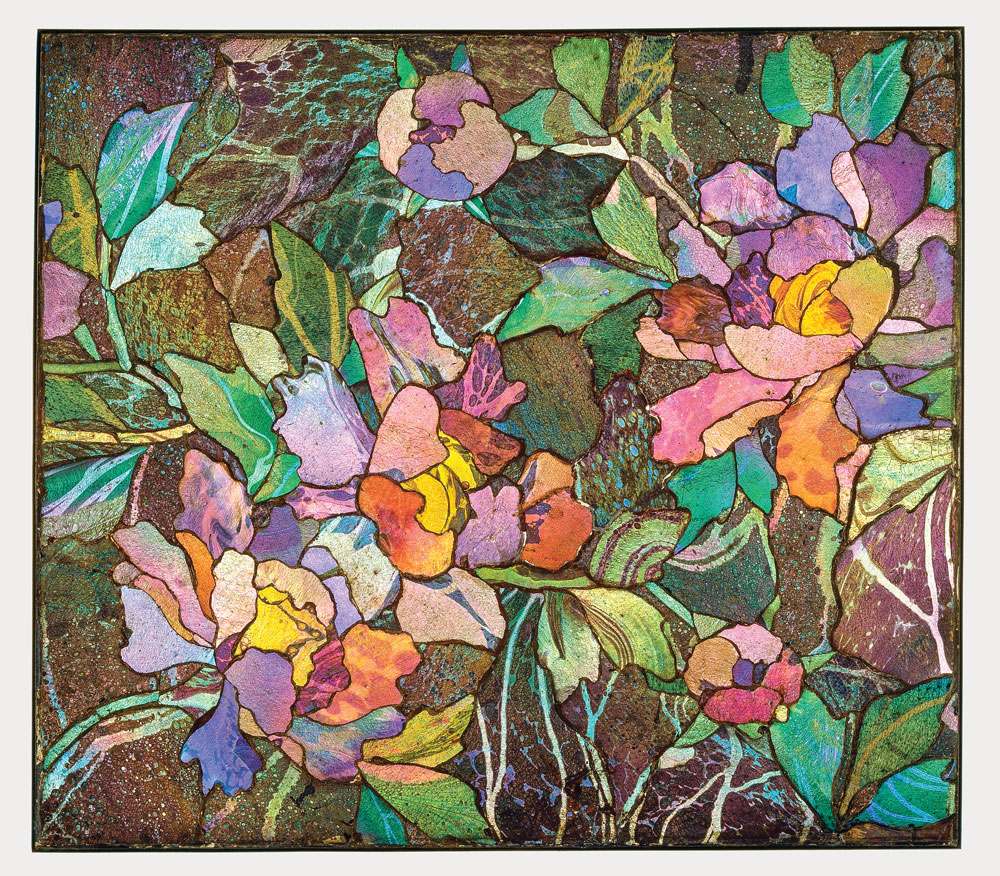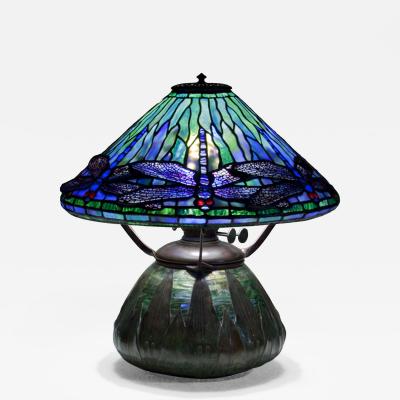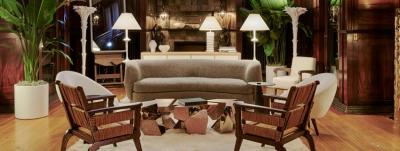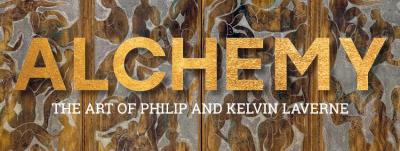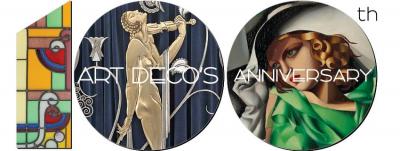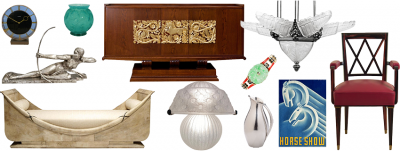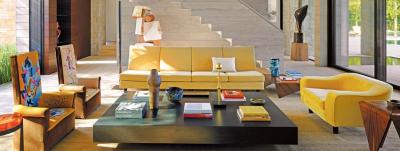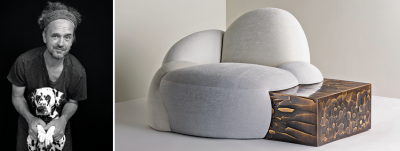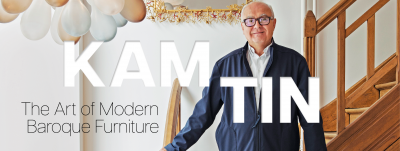An American Taste for Tiffany’s Glass Mosaics
Louis C. Tiffany (1848–1933) and his renowned studios are widely celebrated for their virtuosity in glass. Utter the name “Tiffany” and painterly leaded-glass windows and lampshades as well as iridescent vases likely spring to mind. Less well known are Tiffany’s glass mosaics, but a new exhibition at the Corning Museum of Glass, organized jointly with the Neustadt Collection of Tiffany Glass, highlights the exquisite designs and inventive handling of material that puts these mosaic artworks on par with Tiffany’s better known productions.
While some of the earliest evidence for the use of mosaic designs in architecture extends back more than three thousand years, America lacked a native mosaic tradition until Tiffany brought a new vision to the millennia-old art form. Tiffany and his team of designers and artisans introduced glass with gradations of color and tone within a single piece, which significantly broadened the field of color previously available to mosaic artists (Fig. 1). Designs ranged from representational to ornamental, secular to sacred.

-
Fig. 1: Mural, The Dream Garden, Tiffany Studios, 1916. Glass mosaic. Curtis Publishing Company Building (now The Curtis Center & Dream Garden); mural in the collection of Pennsylvania Academy of Fine Arts (2001.15); partial bequest of John W. Merriam; partial purchase with funds provided by a grant from The Pew Charitable Trusts; partial gift of Bryn Mawr College, The University of the Arts, and The Trustees of the University of Pennsylvania), Philadelphia, Pennsylvania. Image Credit: The Corning Museum of Glass, Corning, New York.
Tiffany’s approach to mosaic evolved over time, as the firm continually explored the artistic possibilities of colored glass (Fig. 2). Whether large or small, uniform or irregular, patterned or plain, textured or flat, monochrome, multicolored, or metallic; glass that absorbed, reflected, or diffused light; or three-dimensional glass “jewels” that were faceted or smooth—these variations were all exploited to develop a new American aesthetic for a rapidly expanding country. In the last quarter of the nineteenth century, an explosion of economic and population growth gave rise to an unprecedented period of new public and private building construction in America. Tiffany’s firm was poised to take advantage of this moment, and glass mosaics were central to many of his most successful interior designs.
Tiffany’s clientele were largely self-made industrialists from such growing sectors of the economy as transportation, banking, and manufacturing, who desired opulent embellishment to adorn their palatial new homes. They also sponsored a wave of new church construction in the 1880s and ‘90s, often including highly fashionable and elaborate interior decoration. In addition, these magnates financed the decoration of universities, libraries, and commercial buildings. As Tiffany’s remarkable new effects in glass were displayed at world’s fairs and exhibitions across America and Europe, the number of mosaic commissions soared during the last decade of the nineteenth century, their complexity and scale enhancing Tiffany’s reputation.

- Fig. 4: Fathers of the Church, panel, about 1892. Tiffany Glass and Decorating Company, designed by Joseph Lauber (American, b. Germany, 1855–1948). Glass mosaic, glass “jewels,” and plaster. H. 98, W. 59 in. The Neustadt Collection of Tiffany Glass, Queens, New York. Image: The Corning Museum of Glass, Corning, New York. ©The Neustadt Collection of Tiffany Glass, Queens, New York.
In 1893, Tiffany and his firm introduced their artistry to an international audience at the World’s Columbian Exposition in Chicago, Illinois. An elaborate Romanesque-inspired chapel (Fig. 3) featured glass-encrusted ecclesiastical furniture and architectural elements that shimmered in the dim light. Additional examples of glass mosaics at Tiffany’s fair display included a Byzantine-inspired, large-scale figural frieze, Fathers of the Church (Fig. 4), as well as fireplace surrounds made for domestic interiors. This range of style and application demonstrated the firm’s ability to work in a mode that respected, but did not slavishly copy, historical styles. Tiffany’s display, visited by more than two million people, garnered significant critical acclaim, along with an unprecedented number of awards, and led to a burst of commissions.
Between approximately 1880 and 1930, Tiffany’s firm executed more than two hundred mosaic commissions, many of which were large-scale, highly-complex decorations for a variety of public buildings, including churches, libraries, hotels, theaters, banks, and offices. Tiffany’s advertisements touted glass mosaics as ideal decoration for industrial cities across America, where “a smoky atmosphere prevails the year round, and where the collection of soot and dirt soon dims all exposed surfaces.” 1 They were promoted as durable, fade resistant, and fireproof. For a city like Chicago, which suffered a devastating fire in 1871, glass mosaics were especially appealing. The company executed several large glass mosaic commissions as a wave of speculative construction swept through Chicago following the World’s Fair in 1893. One example is the masterful figural frieze that still decorates the balcony of the entrance hall of the Marquette building (Fig. 5).
Depicting key scenes from the North American expeditions of Jesuit missionary Jacques Marquette (French, 1637–1675) and Louis Joliet (French-Canadian, 1645–1700) (Fig. 6), the frieze is composed of eleven panels with two hundred thousand pieces of glass and ten thousand “pieces of [mother-of]-pearl,” and took one year to complete. One reviewer noted: “Portions of these panels are almost as cleverly colored as though done by brush, instead of piecing and matching.” 2 Designed by Jacob A. Holzer (b. Switzerland, 1858–1938), the complex composition brilliantly showed off Tiffany’s unique approach to mosaic composition, using glass in inventive ways to lavishly depict a uniquely American subject.
While the design for The Last Supper (Fig. 7), a reredos panel commissioned by the members of the First Independent Church of Baltimore, Maryland, drew upon historical representations in Christian art, the vivid, sophisticated use of glass demonstrated the skills of Tiffany’s talented artisans who selected and cut the glass. The Baltimore Sun indicated the intricate design consisted of sixty-five thousand pieces of glass and took more than a year to fabricate.3The New York Times reported it to be “the most important panel that has ever been attempted in this country.” 4
By 1890, mosaic was popular in private dwellings as well as public buildings. Tiffany included glass mosaic in the architectural interiors of his most significant early commissions, such as the White House under President Chester A. Arthur and the residences of Cornelius Vanderbilt II, Henry O. and Louisine Havemeyer, Robert W. and Emily Johnston de Forest, and Frederick and Ellen Ayer.
If one could not afford to outfit an entire home with Tiffany’s glass mosaics, more modest options were also available. Tiffany’s company conducted a robust business in creating glass mosaic fireplace surrounds for private residences. Tiffany promoted their glass mosaics as “non-absorbent, fireproof, and practically indestructible,” qualities that were attractive to homeowners concerned with cleanliness and fire safety. In addition, they were a fashionable choice for artistically minded clients.
While Tiffany personally favored Oriental and nature-based design influences, his firm offered a range of styles as seen in the selection of watercolor design sketches, extant mosaic panels, and photographs of interiors on view in the exhibition. Mosaic designs for fireplace surrounds often varied within the same house, corresponding to the style and purpose of a room. Two surviving mantel facings (Figs. 8, 9) from the Howell Hinds (American, 1857–1926) residence in Cleveland, Ohio, illustrate this.
In 1899, as the popularity of mosaic decoration was peaking, a reporter made the practical observation that “Every one [sic] cannot have mosaic friezes...in their houses, but the materials used in the construction of these can also be employed in the making of small art objects, and these will be within the reach of many.” 5 Tiffany’s firm was happy to oblige the public’s desire for more modestly scaled mosaics, creating artistic luxury goods such as mosaic tea stands, flower containers, desk accessories (Fig. 10), mantel clocks, and leaded glass lampshades with glass mosaic inset into bronze bases. They also made a small number of one-of-a-kind decorative mosaic panels. Because glass colors are resistant to the fading effects of the sun, it is possible that these “glass paintings” were made for bright, sunlit rooms where painted or paper decorations wouldn’t hold up (Fig. 11).
In reality, most of these smaller items were still out of reach of the average American, and the company was keen to distinguish its products from the mass-produced goods permeating a rapidly expanding consumer landscape. Targeting the luxury market, many of these mosaic fancy goods were available at large department stores such as Marshall Field & Company, as well as Tiffany’s luxurious showrooms in New York City.6
During the more than thirty years of his mosaic production, Louis C. Tiffany approached the technique with the same creativity that characterized his work in leaded and blown glass. His firm moved easily between markedly different subject matter and mosaic styles, while simultaneously exploring and exploiting the artistic possibilities of colored glass. Tiffany’s innovations in glass established a bold new aesthetic for mosaics and contributed a uniquely American character to the centuries-old art form. This special exhibition is the first to explore this little-known aspect of Tiffany’s artistic production.
Tiffany’s Glass Mosaics is on view from May 20, 2017, through January 7, 2018, at The Corning Museum of Glass, Corning, New York, organized jointly with The Neustadt Collection of Tiffany Glass. For more information, visit www.cmog.org. The exhibition is accompanied by the catalogue Tiffany’s Glass Mosaics, co-edited by Conway and Parrott.
Kelly A. Conway, curator of American glass at The Corning Museum of Glass in Corning, New York, and Lindsy R. Parrott, director and curator of The Neustadt Collection of Tiffany Glass in Queens, New York.
2. “Beautiful Mosaics,” The (NY) Press (April 13, 1895): 7.
3. “A Handsome Glass Mosaic,” Baltimore Sun (June 21, 1897): 10.
4. “A Large Figural Mosaic,” New York Times, June 20, 1897, 15. The Last Supper series of mosaic panels are discussed in detail in Natalie Z. Peter’s essay, “Tiffany’s Ecclesiastical Mosaics in New York State,” Tiffany’s Glass Mosaics, Kelly A. Conway and Lindsy R. Parrott, Corning, New York: Corning Museum of Glass, 2017, pp. 132–140.
5. C.S., “Women and Their Work,” The New York Evening Post, August 30, 1899, p. 5.
6. These showrooms were located at 333–341 Fourth Avenue (today Park Avenue) from 1881 to 1905, when they were relocated to the corner of 45th Street and Madison Avenue. The company name also changed from Tiffany Glass & Decorating Company to Tiffany Studios during this period.















